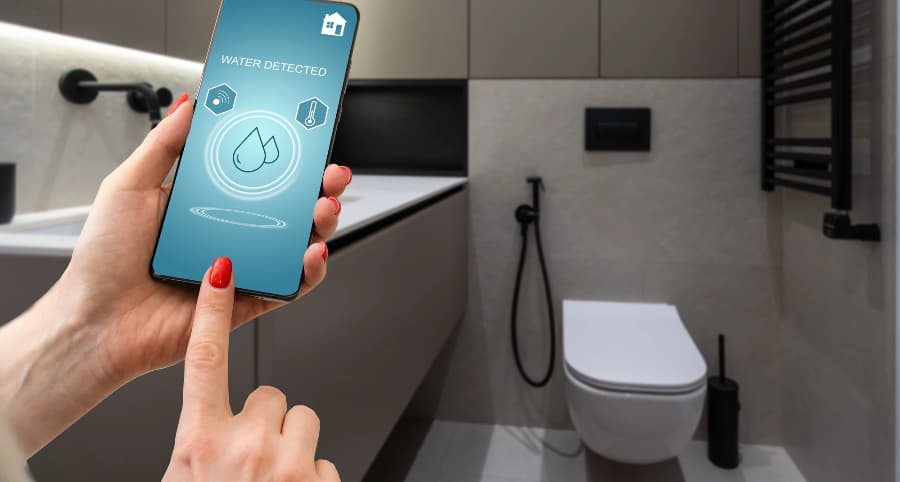How does a water sensor work and why use one with your Logan smart home?

One minor leak at your property can cause major issues and thousands in damage. You have to protect against this threat; fortunately, there’s an easy way to do so. A water sensor is a budget-friendly, simple, and effective solution. Explore how they work and why you ought to connect water sensors to your Logan smart home.
How water sensors protect Logan homes
Water infiltrates homes in many ways, whether from an appliance breakdown, plumbing issue, storm-related event, or human error. No matter how it occurs, you need to know immediately, and this is how water sensors help. But how do they really work?
The majority of water sensors are conductive and function with two electrodes. When water infiltrates the area between the electrodes, an electrical circuit is formed, activating your alarm. You’ll also come across capacitive sensors that give off an electrical field. When water reaches the conductive areas of these devices, the field is interrupted, and your alarm activates. Optical sensors utilizing infrared LED light are an additional choice.
Some water sensors give you more
Certain specialized water sensors offer even more defense as they use integrated temperature sensors. This is an exceptional feature in preventing frozen pipes. If there’s a drastic reduction in temperature, you’ll be notified immediately. Taking measures before pipes break will save you from flooding and exorbitant repair costs.
Why incorporate water sensors into your Logan smart home?
When water problems arise, you need to be alerted right away. You can achieve this objective by connecting water sensors to your smart home. Whether you’re there to hear the alarm or not, you’ll be sent an instant notification on your mobile device. In addition, your 24-hour monitoring specialists will be notified. Every second matters in a water emergency to control the damage and interruption to your family.
Where should you put water sensors?
Any location prone to water infiltration is an appropriate position for water sensors. Place them in these spots:
- Bathrooms: Place near bathtubs or in back of toilets.
- Basements: Water frequently seeps into lower levels through cracked walls or because of excess rain or faulty sump pumps.
- Next to water heaters or appliances: Any water-using appliance might leak in time.
- Under sinks: Water sensors are ideal for identifying pipe leaks in locations hidden from view.
- Attics: Detect roof leaks early and avert costly damage.
Request water sensors with your Vivint smart home
Give your property the robust protection it requires with innovative tools from Vivint. Our water sensors in Logan integrate with your Vivint cell phone app to deliver immediate updates any time your alarm activates. You also benefit from built-in temperature sensors to avert frozen pipes. Discover all the smart home tools available in Logan by reaching out to (562) 376-5457 today.
